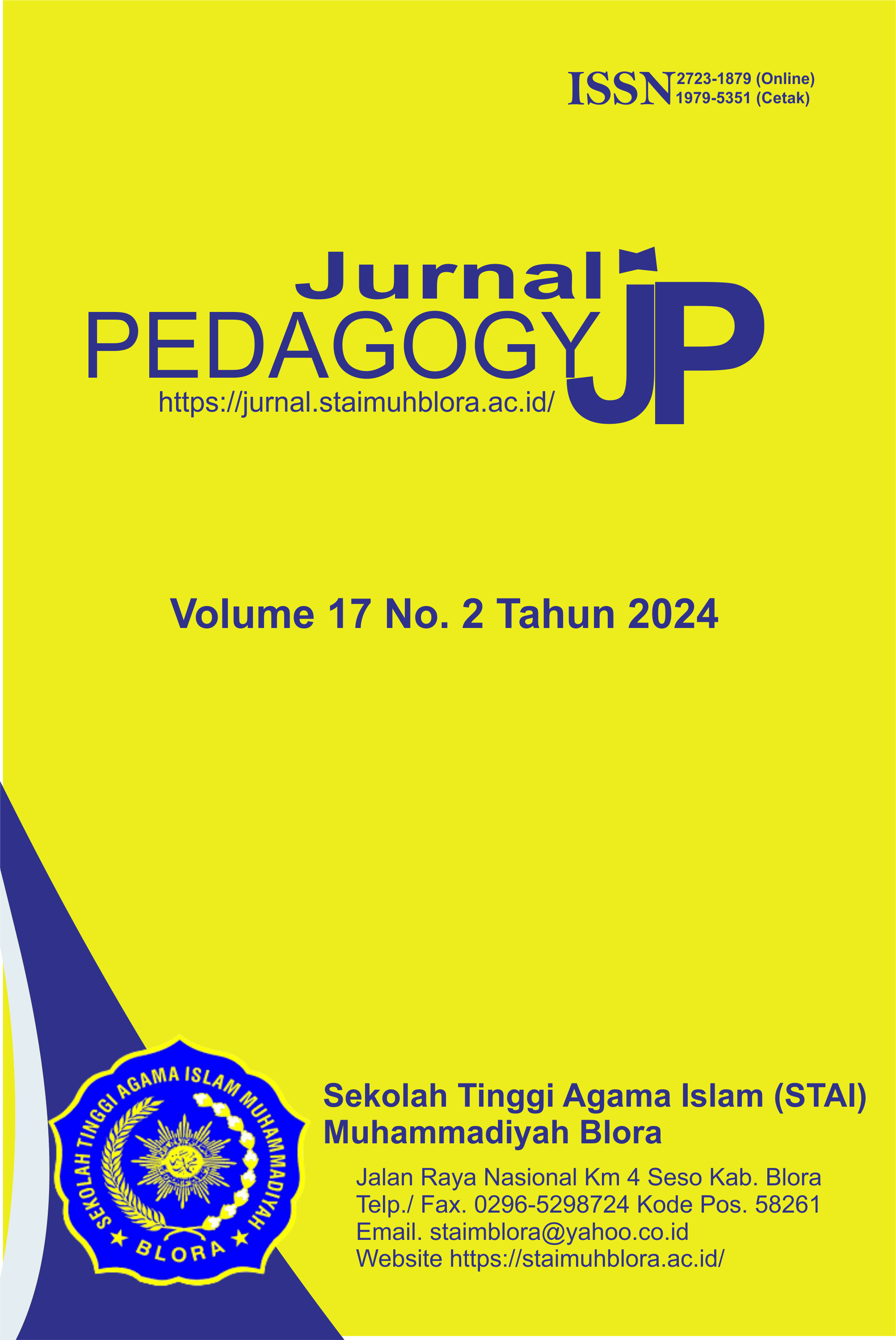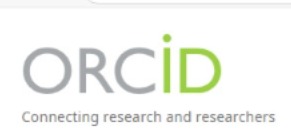Management of Human Resource Administration At SDN 100 And MI Darul Hikmah North Bengkulu
DOI:
https://doi.org/10.63889/pedagogy.v17i2.294Keywords:
management, human resource management, elementary school administration, madrasah ibtdaiyah administrationAbstract
Each school has all processes in the management of its school administration. Especially for MI whose management is under the auspices of the Ministry of Religion, while the elementary school management is under the authority of the national education ministry. Administrative management is also adjusted to the level of existing human resources. For example, a school principal who understands the concept of good management administration will look different from one who does not understand the concept of human resource administration management. Where here human resources are very important because for a KBM to take place there must be teaching staff, school operators, treasurers, committees, etc., because there must be a decent building to support the use of good KBM and qualified ATK for the continuation of an interesting learning process, and adequate facilities are needed to support all of that. The method used by the author is qualitative where all institutions have their way of administering their schools, differences and efforts and different human resources are examples of absolute differences at a school level. The results of the study show that every education budget both in MI and in elementary school is given by the provisions or techniques that apply in education budgeting, such as the number of students, the number of teaching staff, the number of buildings that must be renovated, and so on. Therefore, each school has its tips for guaranteeing existing human resources. Human resource management is needed because the existence and progress of the school depend on school management such as principals, treasurers, teachers, operators, guards, and others.
References
[1] H. Syahputra, “Manusia Dalam Pandangan Filsafat,” Al-Hikmah J. Theosof. dan Perad. Islam, vol. 2, no. 1, Mar. 2020, https://doi.org/10.51900/alhikmah.v2i1.7601.
[2] Kurnia Muhajarah and Muhammad Nuqlir Bariklana, “Agama, Ilmu Pengetahuan Dan Filsafat,” J. Mu’allim, vol. 3, no. 1, pp. 1–14, Jan. 2021, https://doi.org/10.35891/muallim.v3i1.2341.
[3] F. Iffah and Y. F. Yasni, “Manusia Sebagai Makhluk Sosial,” Lathaif Literasi Tafsir, Hadis Dan Filol., vol. 1, no. 1, pp. 38–47, 2022, https://doi.org/10.31958/lathaif.v1i1.5926.
[4] H. J. Sada, “Manusia Dalam Perspsektif Agama Islam,” Antimicrob. Agents Chemother., vol. 58, no. 12, pp. 7250–7, Dec. 2014, https://doi.org/10.1128/AAC.03728-14.
[5] A. S. Muhammad, Perilaku Organisasi. 2016.
[6] P. Diawati, S. S. Gadzali, M. K. N. Abd Aziz, A. M. Almaududi Ausat, and S. Suherlan, “The Role of Information Technology in Improving the Efficiency and Productivity of Human Resources in the Workplace,” J. Teknol. Dan Sist. Inf. Bisnis, vol. 5, no. 3, pp. 296–302, 2023, https://doi.org/10.47233/jteksis.v5i3.872.
[7] M. SYABAN, “Konsep Dasar Manajemen Pendidikan Islam,” AL-WARDAH, vol. 12, no. 2, p. 131, Nov. 2019, https://doi.org/10.46339/al-wardah.v12i2.141.
[8] S. Ridha, I. Rosyadi, M. A. Maisu, and ..., “Management of Zakat Funds for Education Sharia Economic Law Perspective,” Demak Univers. J. Islam Sharia, vol. 2, no. 1, pp. 27–36, 2024, https://doi.org/10.61455/deujis.v1i01.25
[9] N. Safarida and S. Siregar, “Manusia sebagai Aset atau Biaya? Pengungkapan Sumber Daya Manusia dalam Laporan Keuangan,” AKSES J. Ekon. dan Bisnis, vol. 15, no. 2, pp. 72–81, Nov. 2020, https://doi.org/10.31942/akses.v15i2.3780.
[10] M. Hasan, N. Nasution, S. Sofyan, F. A. Guampe, and ..., Pendidikan Dan Sumber Daya Manusia: Menggagas Peran Pendidikan Dalam Membentuk Modal Manusia. 2023.
[11] E. Knies, P. Boselie, J. Gould-Williams, and W. Vandenabeele, “Strategic human resource management and public sector performance: context matters,” Int. J. Hum. Resour. Manag., vol. 35, no. 14, pp. 2432–2444, 2024, https://doi.org/10.1080/09585192.2017.1407088.
[12] E. al. Wenny Desty Febrian, Manajemen Sumber Daya Manusia, vol. 5, no. 3. 2020.
[13] L. Isnaniah, “Manajemen Sumber Daya Manusia,” Manaj. Sumber Daya Mns., pp. 1–2, 2018.
[14] E. W. Prastyaningtyas, A. M. Almaududi Ausat, L. F. Muhamad, M. I. Wanof, and S. Suherlan, “The Role of Information Technology in Improving Human Resources Career Development,” J. Teknol. Dan Sist. Inf. Bisnis, vol. 5, no. 3, pp. 266–275, 2023, https://doi.org/10.47233/jteksis.v5i3.870.
[15] I. Ismail, H. Hasanuddin, and A. Chandra, “The Influence of Thinking Styles and Learning Styles on Student Learning Achievement,” AL-ISHLAH J. Pendidik., vol. 15, no. 1, pp. 193–202, 2023, https://doi.org/10.35445/alishlah.v15i1.2896.
[16] H. N. L. S, “Metode Penelitian Kuantitatif,” Kaji. Teor. Kerangka Konsep Dan Hlpotesls Dalam Penelltl an, no. June, pp. 1–20, 2018.
[17] M. M. Panorama, “Metode Penelitian Kualitatif dan Kuantitatif Pendekatan Praktis,” p. 6, 2015.
[18] E. Berlian, Metodologi Penelitian Kualitatif & Kuantitatif, vol. 11, no. 1. 2019, https://doi.org/10.31227/osf.io/aucjd.
[19] A. Maryanto, “Principal Performance and Leadership in Facing Covid-19 Pandemic at SMK Muhammadiyah 1 Surakarta,” vol. 1, no. 2, pp. 118–126, 2023.
[20] A. Maisu, A. Emmanuel, and C. Morales, “The Impact of Reward and Punishment to Increase the Motivation of Teachers and Academic Staff,” Solo Univers. J. Islam. Educ. Multicult. E, vol. 1, no. 3, pp. 195–204, 2023.
[21] S. Shobron, T. Trisno, M. Muthoifin, M. Mahmudulhassan, and M. N. Rochim Maksum, “Humanist Education the Dayak of Kalimantan Indonesia Islamic Perspective,” Solo Univers. J. Islam. Educ. Multicult., vol. 1, no. 01, pp. 20–29, 2023, https://doi.org/10.61455/sujiem.v1i01.27.
[22] A. S. Mainiyo and M. M. Sule, “Impact of Qur ’ anic Moral Excellence on the Lives of Muslim Society : An Exposition,” Demak Univers. J. Islam Sharia, vol. 1, no. 3, pp. 188–205, 2023.
[23] N. Sharma et al., “Human Resource Management Model with ICT Architecture: Solution of Management & Understanding of Psychology of Human Resources and Corporate Social Responsibility,” J. Reatt. Ther. Dev. Divers., vol. 6, no. 9s2, pp. 219–230, 2023.
[24] Kurnia, “Sistem Manajemen Pemanfaatan Dana Bantuan Operasional Sekolah (BOS) Pada Sekolah Dasar Negeri 29 Bajo Dan Madrasah Ibtidaiyah Swasta 09 Bajo Dikabupaten Luwu,” p. 151, 2019.
[25] R. Susanto, Q. Butlam, and M. A. Ibrahim, “Implementation of Concepts and Thoughts on Sharia in DSKS ( Dewan Syariah Kota Surakarta ),” Demak Univers. J. Islam Sharia, vol. 1, no. 3, pp. 179–187, 2023.
[26] M. R. Kurniawan and S. T. Anggraeni, “The Problem of Akad Murabahah in Sharia Banks : Between Profit-Oriented and Sharia Compliance,” Demak Univers. J. Islam Sharia, vol. 2, no. 1, pp. 55–66, 2024.
[27] H. Widyastono, “Muatan Pendidikan Holistik dalam Kurikulum Pendidikan Dasar dan Menengah,” J. Pendidik. dan Kebud., vol. 18, no. 4, pp. 467–476, Dec. 2012, https://doi.org/10.24832/jpnk.v18i4.102.
[28] Muhamad Ripin Ikwandi, “Dualisme Pendidikan Manajemen Pendidikan Sekolah Dan Madrasah,” EDUSIANA J. Manaj. dan Pendidik. Islam, vol. 9, no. 2, pp. 105–124, Sep. 2022, https://doi.org/10.47077/edusiana.v9i2.227.
[29] K. Agustian, A. Pohan, A. Zen, W. Wiwin, and A. J. Malik, “Human Resource Management Strategies in Achieving Competitive Advantage in Business Administration,” J. Contemp. Adm. Manag., vol. 1, no. 2, pp. 108–117, 2023, https://doi.org/10.61100/adman.v1i2.53.
[30] S. Arif and Dian Hidayati, “Analisis Kebijakan Pendidikan Dalam Perspektif Madrasah,” Syntax Idea, vol. 6, no. 3, pp. 1138–1148, Mar. 2024, https://doi.org/10.46799/syntax-idea.v6i3.3057.
[31] Julaiha, Siti Jumroh, and Adiyono, “Pengelolaan Administrasi Madrasah Tsanawiyah Al-Ihsan dalam Meningkatkan Kualitas Pendidikan Madrasah,” J. Educ., vol. 05, no. 02, pp. 3108–3113, 2023.
[32] A. Matinul Haq and E. Roesminingsih, “Situational Leadership Skills of Foundation Heads in Human Resource Development for Early Childhood Education,” Munaddhomah J. Manaj. Pendidik. Islam, vol. 5, no. 1, pp. 26–40, 2023, https://doi.org/10.31538/munaddhomah.v5i1.545.
[33] D. C. E. Okonkwo, “Principal’s Economic Resources Management And Effective Administration Of School System In Nigeria,” Unizik J. Educ. Res. Policy Stud., vol. 17, no. 3, pp. 24–35, 2024, [Online]. Available: https://www.unijerps.org/index.php/unijerps/article/view/672
[34] S. Zhou, W. A. Tiruneh, and M. A. Legese, “The effect of corporate social responsibility on environmental performance: the mediating role of green innovation and green human resource management,” Int. J. Emerg. Mark., vol. 19, no. 11, pp. 3848–3868, 2023, https://doi.org/10.1108/IJOEM-02-2022-0211.
[35] Z. Aripin, F. Matriadi, and S. Ermeila, “Optimization of worker work environment, robots, and marketing strategy: The impact of digital-based spatiotemporal dynamics on Human Resource Management (HRM),” Jesocin, vol. 1, no. 3, pp. 1–17, 2024, [Online]. Available: www.jesocin.com1
[36] M. Nyathi and R. Kekwaletswe, “Electronic human resource management (e-HRM) configuration for organizational success: inclusion of employee outcomes as contextual variables,” J. Organ. Eff., vol. 11, no. 1, pp. 196–212, 2024, https://doi.org/10.1108/JOEPP-08-2022-0237.
[37] S. Garg, S. Sinha, A. K. Kar, and M. Mani, “A review of machine learning applications in human resource management,” Int. J. Product. Perform. Manag., vol. 71, no. 5, pp. 1590–1610, 2022, https://doi.org/10.1108/IJPPM-08-2020-0427.
[38] C. Darmawan, “Implementasi Kebijakan Profesi Guru Menurut Undang-Undang Republik Indonesia Nomor 14 Tahun 2005 Tentang Guru Dan Dosen Dalam Perspektif Hukum Pendidikan,” Wacana Paramarta J. Ilmu Huk., vol. 19, no. 2, pp. 61–68, Oct. 2020, https://doi.org/10.32816/paramarta.v19i2.86.
[39] A. Alhamad et al., “The effect of electronic human resources management on the organizational health of telecommunications companies in Jordan,” Int. J. Data Netw. Sci., vol. 6, no. 2, pp. 429–438, 2022, https://doi.org/10.5267/j.ijdns.2021.12.011.
[40] M. R. Amalia, “The Impact of Digital Era 4.0 Transformation on Human Resources Management,” Manag. Stud. Bus. J., vol. 1, no. 1, pp. 89–98, 2024, https://doi.org/10.62207/9btfqx28.
Downloads
Published
How to Cite
Issue
Section
License
Copyright (c) 2024 A. Tsabat Izzudin, Moch. Iqbal

This work is licensed under a Creative Commons Attribution-ShareAlike 4.0 International License.






